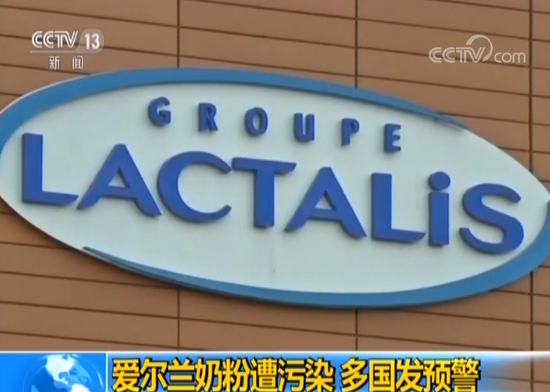Part Nine:THE ROOT OF LIFE-Qi
|
文章导读: |
3. Defending Action of Qi 3.气的防御功能
Qi has defending function to defend the body surface against the exogenous pathogens and to combat with the invaded exogenous pathogens to drive them out of the body. The book Basic Questions, therefore, states:" When vital qi exists in the body, the exogenous pathogens can not attack the body." And " If the pathogens invade and occupy the body, qi-deficiency is bound to ensue." Thereby leading to illness.
气的防御功能为防卫外邪袭表并将外邪驱除至体外。因此,《素问》指出:“正气存内,邪不可干”和“邪气所凑,其气必虚”疾病也随之产生。
4. Controlling Action of Qi 4.气的固摄功能
Qi also has controlling action, by which is meant the ability to control the liquid substances and fix the internal organs in the body. This is shown in the following aspects:
(1) Keeping the blood flowing within the vessels to prevent it from extravasating without reason.
(2) Controlling and regulating the secretion and excretion of sweat, urine, sperm, saliva, gastrointestinal juices, etc , to maintain a relative balance of water metabolism.
(3) Firming the internal organs in their normal positions without prolapse.
气也有固摄的作用,这意味着气有固摄液体和人体内脏器官的能力。这可以从以下几方面体现:
(1)维持血液在脉管中运行,防止其无故外溢。
(2)控制和调节汗液、尿液、精液、唾液、胆汁等的储存和排泄,以维持水液代谢的相对平衡。
(3)维持内脏器官在正常的位置不至于下垂。
If this action is impaired, hemorrhage, premature ejaculation, spontaneous sweating, urinary incontinence, and spermatorrhea will occur. If this action fails to work normally,such prolapses as gastroptosis, nephroptosis, hysteroptosis will be brought about.
如果此功能受损,将会出现出血、早泄、自汗、遗尿和遗精。如果该功能不能正常运行,则会出现胃下垂、肾下垂、子宫下垂等下垂症状。
The promoting and controlling actions of qi are the two aspects of mutual opposition and mutual complement. Provided these two actions work harmoniously, blood circulation and water metabolism can be normally carried on.
气的促进和固摄功能是相互对立、相互补充的两方面。如果这两种功能能协调运行,则血液循环和水液代谢就会正常。
5 . Action of Qi Transformation
5.气的气化功能
Qi transformation may be defined as various kinds of changes brought about by the movement of qi. Concretely speaking, it refers to the respective metabolism of essence, qi, blood and body fluid and their reciprocal transformation. For instance, food is transformed into qi, blood and body fluid; body fluid are converted into sweat and urine by metabolizing, and the residues of food,after digestion and absorption, are turned into feces to be discharged from the body. All these processes are all the specific manifeatations of the action of qi transformation. If qi transformation is out of order, it will affect the digestion, absorpiion of food, the metabolism and transformation of essence, blood and body fluid, the excretion of sweat, urine and feces and so on .To put it briefly, qi transformation is actually the process in which the substances in the body are metabolized and intertransformed. Although the above five actions of qi differ from one another, they are indispensable to maintaining human life. Their harmonious cooperation and mutual support ensure that the physiological activities are completed smoothly.
气的气化功能可以定义为各种不同的变化来自于气的运动。具体的说,它指的是精、气、血和体液的独立代谢和它们彼此的相互转化。例如,食物转化成气、血和体液;体液通过代谢转化成汗和尿液,而食物残渣经过消化和吸收后则转化成粪便排除体外。所有的这些过程都是气化功能的特殊表现。如果气化功能失常则会影响食物的消化和吸收,精、血、体液的代谢和转化,汗液、尿液和粪便的排泄等等。简要的说,气化实际上是体内物质代谢和转化的过程。虽然以上五种气的功能各不相同,但它们在生命的维持上是不可分离的。它们之间的协调合作和相互支持是生理活动顺利完成的保障。
The Movement of Qi is known as "qi ji", qi activity. Qi in the human body travels throughout the body and reach all the zang-fu organs and meridians to promote and activate the physiological activities of the human body.
气的运动叫做“气机”。气运行于全身到达所有的脏腑组织和经络,促进和推动人体的生理活动。
Qi has four basic forms: ascending, descending, exiting and entering. These four forms are the basis of human's life activities.Once these movements stop, it means that the life activities ceaseand death ensues.
气有四种运动形式:升、降、出、入。这四种形式是人类生命活动的基础。一旦这些运动停止了,便意味这生命活动的终止和死亡的发生。
The ascending, descending, exiting and entering of qi are mainly embodied in the physiological activities of the zang-fu organs, meridians and other processes of metabolism. For example,the lung governs respiration, exhaling pertains to exiting, inhaling to entering; and dispersing pertains to ascending, lowering to descending. The spleen sends the clear upward and the stomach passes the turbid downward. So all kinds of physiological activities in the human body, essentially, are reflected in the four movements of qi.
气的升、降、出、入具体表现在脏腑组织、经络和其它代谢过程的生理活动中。例如,肺主呼吸,呼气为出,吸气为入;宣发为升,肃降为降。脾的升清和胃的降浊。人体的各种生理活动都必将在气的四种运动形式中体现。
|
|























